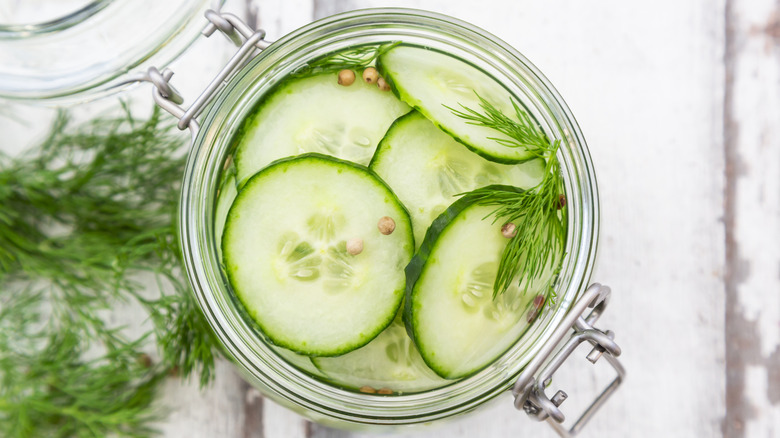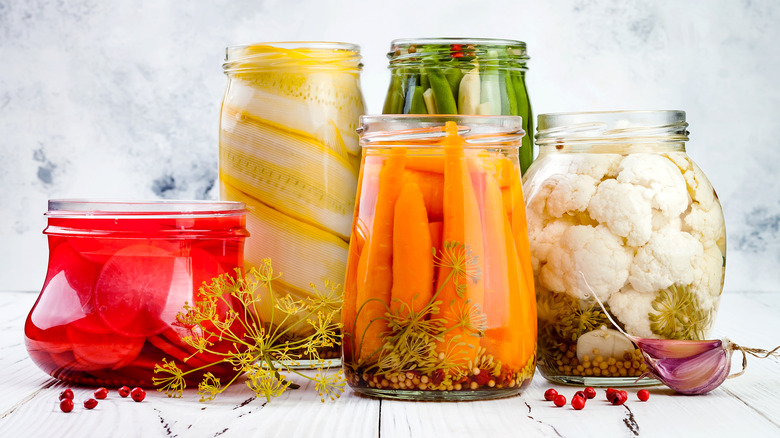Even The Worst Home Cooks Can Make This Type Of Pickle At Home
We've done pickle research here at The Takeout and even ranked the best pickle brands on store shelves. As with any food, however, pickles always taste different when you make them at home — even if you're mostly just tasting the effort you put into them. There are so many pickling methods and types of vegetables you can try out, but one style of pickle is much easier to make than others: refrigerator pickles.
For guidance, we spoke to Vivian Villa, chef and founder of the plant-based butter and pesto line UnButter. She said that the fridge pickle method is great for a beginner home cook and that pretty much any vegetable or fruit can be easily pickled. "Unlike the lengthy canning method intended for a long period of storage, the fridge pickle method is for immediate consumption," Villa explained. "Veggies of choice are prepped, then packed into a jar in a simmered vinegar-water brine seasoned with whatever herbs, seasonings, and spices are on hand." After everything cools down, the pickles are refrigerated and can be eaten immediately.
This technique is straightforward, and anyone can make delicious refrigerator pickles. The only potential drawback is the shelf life. The big difference between refrigerated and shelf-stable pickles is that canned pickles are made using a sanitizing process that protects and preserves the precious product. Your fridge pickles, while delicious, will only last about a month before beginning to spoil. If they take on a bad smell, show signs of mold, or get bubbly, it's time to throw them out.
Expert tips for making refrigerator pickles
Your options for refrigerator pickles are wide-ranging, though Vivian Villa recommended selecting produce that is in good shape, not too mature, and free of blemishes. "Cabbage, kale, and radicchio are particularly good," she told us. These can go into the brine raw, but others may require an extra step if you want to prioritize presentation. "To retain color, some veggies, including carrots, zucchini, and green beans, can be blanched and then shocked in cold water before the pickling process," she advised. Either way, "Pricking vegetables all over with the tip of a knife allows quicker penetration of the brine," Villa noted.
The ingredients you put into your brine also make a big difference. Villa offered a few delightful flavoring suggestions: "With carrots, try pumpkin spice with cinnamon stick; cherry tomatoes with crushed garlic, fresh oregano, and thyme; cucumbers with peppercorn and mint; or green grapes with cardamom and lemon zest." Black peppercorns and mustard seeds are among the most common brine seasonings, and red pepper flakes are a dependable way to add a kick — start simple and get creative as you experiment.

